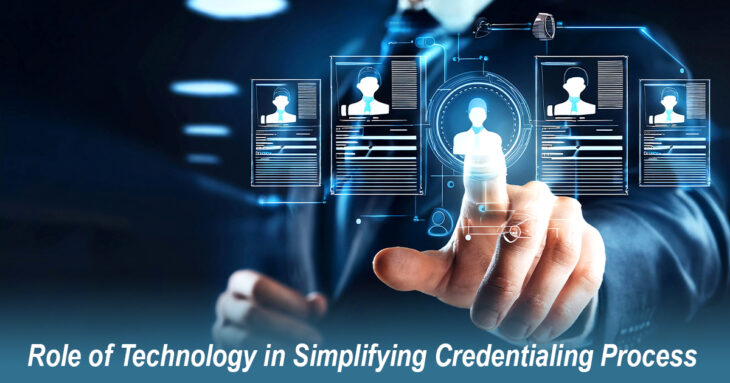
The Role of Technology in Simplifying the Credentialing Process
In today’s healthcare world, medical billing companies like Pro-MedSole RCM are providing a transformation that how operations of credentialing process are managed. The integration of advanced technology solutions has ultimately changed the approach of healthcare providers, creating opportunities for efficiency and accuracy improvements.
The traditional credentialing process was alot of paperwork, lengthy verification periods, and mostly human errors, is now reshaped by innovative digital solutions. These technological advancements are not only improvements but represent a complete shift in how healthcare organizations manage provider verification, enrollment, and compliance monitoring.
In this blog, we’ll explore how technology is handling the credentialing process, the types of tools available, the benefits to healthcare facilities, and why the technology is necessary in today’s healthcare environment.
What Is Credentialing and why it matters?
Credentialing is the process of verifying a qualifications of healthcare providers, such as education, training, licenses, and professional history. It’s not only important for patient safety but also for legal and financial reasons. Insurance panels will not reimburse to those providers who are not properly credentialed.
Enrollment, is mostly considered a part of credentialing, involves registering the providers with insurance companies so they can receive payments. Both steps are important for a better revenue cycle and error-free service delivery.
The Traditional Credentialing process
Manual credentialing methods was done by spreadsheets, faxed documents, exchange of emails, and manual verification. This leads to:
- Long delays in provider onboarding
- Lost or incomplete documents
- Increased chances of human error
- Poor tracking and less accountability
- Enrollment delay cause revenue loss
How Technology Supports the Credentialing Process
1. Centralized Credentialing Software
Modern credentialing platforms allow storage, tracking, and management of provider data in a centralized space. These tools notify users when credentials expire and ensure data stays updated.
2. Automated Document Collection
Instead of chasing documents through email or fax, providers can upload documents through secure portals. The system automatically organizes and links them with specific provider profiles.
3. Integrated Primary Source Verification (PSV)
PSV is a requirement in most credentialing workflows. Digital platforms connect with licensing boards and certification entities for real-time verification.
4. Enrollment Automation
Once credentialing is complete, enrollment data is shared with payer systems. APIs and some integrations results in less duplication and avoid missing information.
5. Audit and Reporting
Credentialing software records each action taken. This helps in internal audits, compliance tracking, and responding to payer inquiries quickly.
Benefits of Using Technology in Credentialing
- Faster Turnaround Times
Credentialing software reduces time-to-enroll significantly, sometimes by weeks.
- Reduced Manual Errors
Pre-built validation rules check for missing documents or incorrect formats.
- Better Visibility
Dashboards and reports give a real-time results and view of credentialing progress.
- Scalability
Organizations can manage the credentialing process for more providers with the same workforce.
Challenges in Digital Transformation
Even with robust technology, adopting digital credentialing solutions may face:
- Resistance from staff used to manual methods
- Costs of implementation and training
- Data migration issues
- Vendor reliability concerns
To address these and to manage enrollment, leadership must ensure clear communication, user-friendly platforms, and gradual rollout plans.
Pro-MedSole RCM’s Approach to Innovation:
As a leading medical billing company, Pro-MedSole RCM recognizes the importance technology and innovation in credentialing developments. Our commitment to innovation results in continuous evaluation of new technologies and their applications to improve client services. We understand that healthcare providers rely on our expertise not only for revenue cycle management but also for the guidance on administrative process, that increase their operational efficiency.
Our Expert team regularly monitors industry developments and participates in professional development opportunities to provide extra ordinary solutions to our clients. This commitment to innovation helps differentiate our services and deliver superior value to healthcare providers.
At Pro-MedSole RCM, we assist healthcare practices by managing their credentialing workflows through modern platforms. Our approach results in less onboarding delays, better payer communications, and timely reimbursements. Our clients have reported quicker approvals and better credential visibility after switching to our credentialing systems.
Conclusion:
The transformation of credentialing and enrollment processes through technology represents one of the most significant improvements in healthcare administration in recent decades. For medical billing companies like Pro-MedSole RCM, to stay updated with credentialing technology developments provides them superior value while maintaining efficient operations.
The future of credentialing is integration of advanced technologies including artificial intelligence, blockchain, predictive analytics, and mobile platforms. Organizations that adopt these technologies and also focus on security, compliance, and user experience can achieve the greatest benefits from their technology investments.
Contact our team, we stay ahead of credentialing challenges by using reliable platforms that offer visibility, speed, and accuracy, all are important for your success.